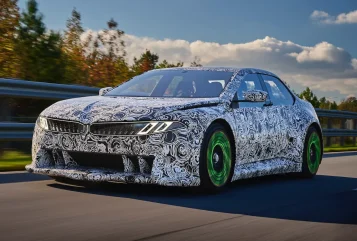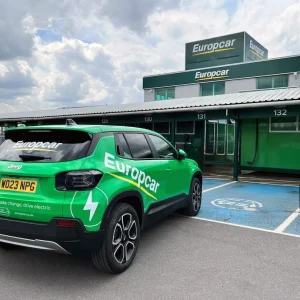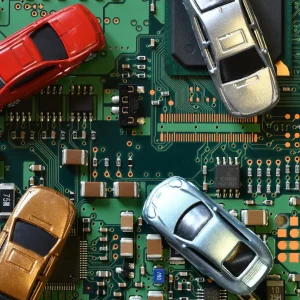
BMW’s sixth-generation (Gen6) electric vehicle technology will debut with the first of the Neue Klasse range – an iX3-size SUV – later this year, with a saloon to follow in 2026. It’s a modular system which will eventually be rolled out across a much wider line-up, from small cars to high-performance M products. For comparison, Gen5 spans the iX1 to the Rolls-Royce Spectre.
Dr Joachim Post, board member for purchasing and supplier network, said real-world data was critical during development: “We have the largest connected fleet in the world. It’s [very valuable] that you have that connection to the cars, to learn how the customers use [them and] what you can improve. We can make updates over the air, get the latest functions [and] this learning is integrated in the development of the next generation.”
Neue Klasse vehicles will follow the classic BMW rear-wheel drive layout, with an optional second motor at the front axle for four-wheel drive variants. The rear drive unit uses an evolution of Gen5’s externally excitable motor technology, which creates a magnetic field using electric current instead of having permanent magnets, while a compact induction motor will power the front wheels on xDrive models. Neither use rare earth materials.
In early models, the rear motor will be available with four power outputs between 268bhp and 402bhp, while the front motor will produce either 161bhp or 241bhp. As the model range expands, the company will add additional power outputs and offer three and four-motor versions – the latter could form the basis of future M models.
Some of the biggest advances are already in production. The iX SUV switched to silicon carbide chips in the inverter’s power modules during its recent update, offering improved efficiency compared to Gen5 units. BMW is claiming a 40% reduction in energy losses at the inverter, while Neue Klasse vehicles will use an optimised regenerative braking setup that all but avoids using the friction brakes, all of which helps maximise efficiency.
The new battery design uses cylindrical cells directly into a structural pack, which also functions as the cabin floor, instead of rectangular units in modules. This enables more energy capacity (and range) within the same volume of space, and it’s highly modular. Future models could utilise cheaper LFP chemistry, there are two cell heights to suit different bodystyles, while additional rows of cells can extend the range where needed.
Neue Klasse vehicles will offer a claimed 20% efficiency improvement, which reduces costs and contributes to a 30% longer like-for-like range.
BMW has also adopted 800-volt charging, as used by Porsche, Hyundai and Kia, enabling Gen6 vehicles to regain up to 186 miles within ten minutes. The platform will also support vehicle-to-grid and vehicle-to-load technology and offer an in-car readout showing battery degradation – a requirement of incoming Euro 7 regulations – while the control module is separate from the rest of the pack for easier repairs.
“A lot of customers tell us, once you have driven an EV [you realise] you don’t really need so much [range] because you have learned where you can fast charge,” continued Post.
“I think [charging speed] is more important – [if you can restore] 300km (186 miles) in 10 minutes, then it’s not necessary to have these huge ranges. We want to reduce weight and cost, that’s why we’re also investing in silicon carbide technology, to increase efficiency. The best thing to reduce the battery [weight and cost] is to increase efficiency.”





